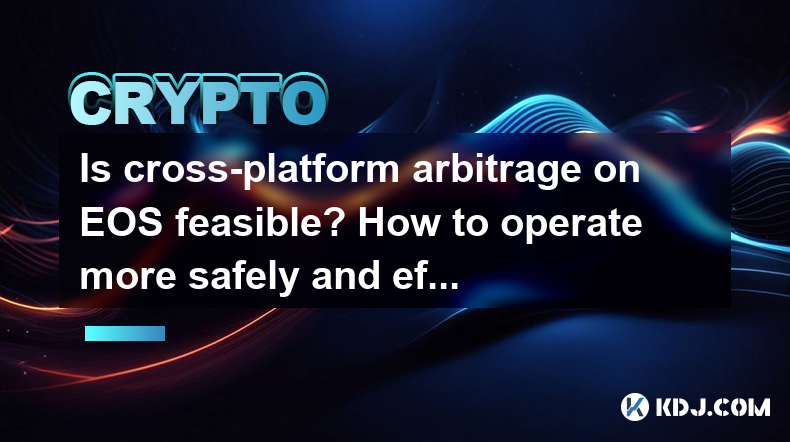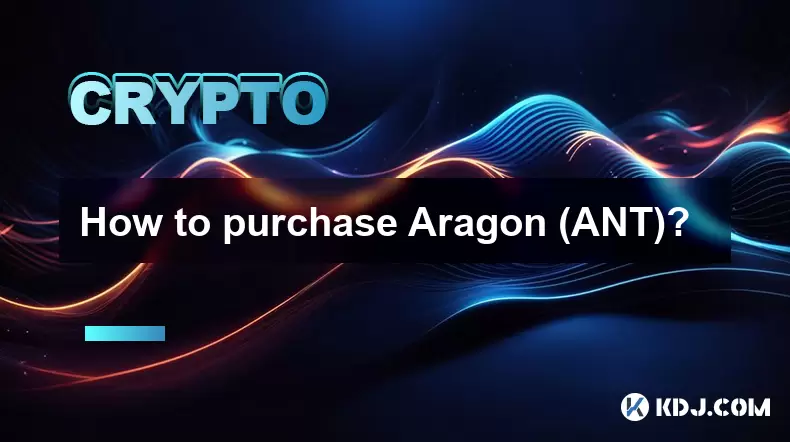-
 Bitcoin
Bitcoin $108500
-2.74% -
 Ethereum
Ethereum $4355
-2.78% -
 Tether USDt
Tether USDt $1.000
0.00% -
 XRP
XRP $2.815
-3.82% -
 BNB
BNB $858.1
-1.50% -
 Solana
Solana $205.1
-5.45% -
 USDC
USDC $0.9997
-0.02% -
 Dogecoin
Dogecoin $0.2168
-2.33% -
 TRON
TRON $0.3392
-1.39% -
 Cardano
Cardano $0.8326
-2.10% -
 Chainlink
Chainlink $23.35
-3.33% -
 Hyperliquid
Hyperliquid $44.45
-3.23% -
 Ethena USDe
Ethena USDe $1.001
-0.03% -
 Sui
Sui $3.299
-4.46% -
 Stellar
Stellar $0.3595
-3.95% -
 Bitcoin Cash
Bitcoin Cash $531.3
-4.35% -
 Cronos
Cronos $0.2992
-2.33% -
 Avalanche
Avalanche $23.58
-5.57% -
 Hedera
Hedera $0.2260
-4.25% -
 UNUS SED LEO
UNUS SED LEO $9.505
-0.82% -
 Litecoin
Litecoin $110.5
-2.45% -
 Toncoin
Toncoin $3.091
-1.91% -
 Shiba Inu
Shiba Inu $0.00001233
-1.95% -
 Polkadot
Polkadot $3.799
-3.73% -
 Uniswap
Uniswap $9.625
-3.38% -
 Dai
Dai $0.9999
0.00% -
 Bitget Token
Bitget Token $4.540
-1.59% -
 Monero
Monero $261.9
-1.23% -
 Aave
Aave $314.4
-0.18% -
 Ethena
Ethena $0.6572
-1.68%
Is cross-platform arbitrage on EOS feasible? How to operate more safely and efficiently?
Cross-platform arbitrage on EOS is feasible with fast transactions and low fees; use secure exchanges, arbitrage bots, and start small for safety and efficiency.
May 05, 2025 at 05:49 am

Is cross-platform arbitrage on EOS feasible? How to operate more safely and efficiently?
Cross-platform arbitrage on EOS, like any other blockchain, involves taking advantage of price differences of the same asset across different trading platforms. EOS, being a popular blockchain for decentralized applications, offers numerous opportunities for such arbitrage. The feasibility of this strategy largely depends on understanding market dynamics, having the right tools, and executing trades swiftly and efficiently.
Understanding Cross-Platform Arbitrage on EOS
Cross-platform arbitrage on EOS involves buying EOS or EOS-based tokens on one exchange where the price is lower and selling them on another exchange where the price is higher. The key to successful arbitrage is speed and efficiency, as price discrepancies often exist for short periods. The feasibility of this strategy on EOS is enhanced by the blockchain's fast transaction speeds and low fees, which are crucial for executing trades quickly.
To engage in cross-platform arbitrage on EOS, you need to have accounts on multiple exchanges that support EOS trading. Some popular exchanges for EOS include Binance, Kraken, and Huobi. It's essential to monitor the prices of EOS across these platforms continuously to identify profitable arbitrage opportunities.
Tools and Software for EOS Arbitrage
To operate efficiently, you'll need access to real-time data and automated trading tools. Arbitrage bots and trading software can help you monitor price differences and execute trades automatically. Some popular tools for crypto arbitrage include ArbiSmart, HaasOnline, and Cryptohopper. These tools can be configured to scan multiple exchanges for EOS price discrepancies and execute trades when certain thresholds are met.
When choosing a tool, consider factors such as reliability, speed, and ease of use. It's also crucial to ensure that the tool supports EOS and the exchanges you plan to use. Setting up these tools typically involves connecting your exchange accounts via API keys and configuring the bot with your preferred trading parameters.
Safety Measures for EOS Arbitrage
Safety is paramount when engaging in cross-platform arbitrage on EOS. Using secure and reputable exchanges is the first step in protecting your funds. Ensure that your exchange accounts are protected with strong passwords and two-factor authentication (2FA). Additionally, never share your API keys with anyone, and limit the permissions granted to your arbitrage bots to minimize the risk of unauthorized access.
Another important safety measure is to start with small trades to test your arbitrage strategy and tools. This allows you to gain experience and confidence without risking significant capital. As you become more comfortable and your strategy proves successful, you can gradually increase the size of your trades.
Efficient Execution of EOS Arbitrage Trades
Efficiency in executing EOS arbitrage trades is crucial for maximizing profits. Use high-speed internet connections to ensure that your trades are executed as quickly as possible. Additionally, consider using a virtual private server (VPS) to run your arbitrage bots, as this can provide a more stable and faster trading environment compared to running the bots on your personal computer.
Another aspect of efficient execution is managing your funds effectively. Keep enough liquidity in your exchange accounts to take advantage of arbitrage opportunities as they arise. However, be cautious not to overextend your capital, as this can lead to significant losses if the market moves against you.
Monitoring and Adjusting Your EOS Arbitrage Strategy
Successful cross-platform arbitrage on EOS requires constant monitoring and adjustment of your strategy. Keep an eye on market trends and news that could affect EOS prices, as these can create new arbitrage opportunities or disrupt existing ones. Use trading journals to track your trades and analyze your performance over time. This will help you identify patterns and refine your strategy.
Additionally, be prepared to adjust your arbitrage thresholds and parameters based on market conditions. Flexibility is key to maintaining profitability in the dynamic world of crypto arbitrage.
FAQs
Q: How do I choose the best exchanges for EOS arbitrage?A: When selecting exchanges for EOS arbitrage, consider factors such as liquidity, fees, security, and the availability of EOS trading pairs. Popular and reputable exchanges like Binance, Kraken, and Huobi are good starting points. Additionally, check if the exchanges offer API access for automated trading, as this is crucial for efficient arbitrage.
Q: Can I engage in EOS arbitrage manually, or do I need automated tools?A: While it's possible to engage in EOS arbitrage manually, using automated tools is highly recommended for efficiency and speed. Manual arbitrage requires constant monitoring of prices across multiple exchanges, which can be time-consuming and less effective. Automated tools can scan for price discrepancies and execute trades much faster than a human trader.
Q: What are the risks associated with EOS arbitrage, and how can I mitigate them?A: The main risks of EOS arbitrage include market volatility, exchange hacks, and technical failures. To mitigate these risks, use reputable exchanges with strong security measures, start with small trades, and diversify your arbitrage activities across multiple exchanges and assets. Additionally, always keep your funds in secure wallets when not actively trading.
Q: How can I ensure my EOS arbitrage strategy remains profitable over time?A: To ensure long-term profitability, continuously monitor and adjust your arbitrage strategy based on market conditions. Keep up with EOS-related news and developments that could impact prices. Use trading journals to track your performance and identify areas for improvement. Additionally, consider diversifying your arbitrage activities across different cryptocurrencies to spread risk and increase potential opportunities.
Disclaimer:info@kdj.com
The information provided is not trading advice. kdj.com does not assume any responsibility for any investments made based on the information provided in this article. Cryptocurrencies are highly volatile and it is highly recommended that you invest with caution after thorough research!
If you believe that the content used on this website infringes your copyright, please contact us immediately (info@kdj.com) and we will delete it promptly.
- Bitcoin vs. Altcoins: Decoding the Dominance Shift
- 2025-08-30 13:25:27
- Luxury Brands, Crypto Adoption, and the Web3 Revolution: What's the Deal?
- 2025-08-30 13:05:14
- BlockDAG, ETH, and PEPE Coin: Decoding the Crypto Hype in the City That Never Sleeps
- 2025-08-30 11:50:12
- Paige Bueckers, Micah Parsons, and Luka Doncic: A whirlwind of trades, stardom, and cross-sport admiration
- 2025-08-30 09:25:36
- Bitcoin, Settlement, and Accounting Standards: A New Era of Transparency?
- 2025-08-30 10:10:12
- Bitcoin Price, Eric Trump, and AMDax: A Million-Dollar Prediction and a 1% Supply Grab
- 2025-08-30 10:45:57
Related knowledge

How to purchase Aragon (ANT)?
Aug 09,2025 at 11:56pm
Understanding Aragon (ANT) and Its PurposeAragon (ANT) is a decentralized governance token that powers the Aragon Network, a platform built on the Eth...

Where to trade Band Protocol (BAND)?
Aug 10,2025 at 11:36pm
Understanding the Role of Private Keys in Cryptocurrency WalletsIn the world of cryptocurrency, a private key is one of the most critical components o...

What is the most secure way to buy Ocean Protocol (OCEAN)?
Aug 10,2025 at 01:01pm
Understanding Ocean Protocol (OCEAN) and Its EcosystemOcean Protocol (OCEAN) is a decentralized data exchange platform built on blockchain technology,...

How to invest in Kyber Network Crystal v2 (KNC)?
Aug 12,2025 at 05:21pm
Understanding Kyber Network Crystal v2 (KNC)Kyber Network is a decentralized liquidity hub built on the Ethereum blockchain that enables instant token...

Where can I buy UMA (UMA)?
Aug 07,2025 at 06:42pm
Understanding UMA and Its Role in Decentralized FinanceUMA (Universal Market Access) is an Ethereum-based decentralized finance (DeFi) protocol design...

How to sell my Ren (REN) tokens?
Aug 13,2025 at 11:35am
Understanding REN Tokens and Their Role in Decentralized FinanceREN is an ERC-20 token that powers the Ren protocol, a decentralized interoperability ...

How to purchase Aragon (ANT)?
Aug 09,2025 at 11:56pm
Understanding Aragon (ANT) and Its PurposeAragon (ANT) is a decentralized governance token that powers the Aragon Network, a platform built on the Eth...

Where to trade Band Protocol (BAND)?
Aug 10,2025 at 11:36pm
Understanding the Role of Private Keys in Cryptocurrency WalletsIn the world of cryptocurrency, a private key is one of the most critical components o...

What is the most secure way to buy Ocean Protocol (OCEAN)?
Aug 10,2025 at 01:01pm
Understanding Ocean Protocol (OCEAN) and Its EcosystemOcean Protocol (OCEAN) is a decentralized data exchange platform built on blockchain technology,...

How to invest in Kyber Network Crystal v2 (KNC)?
Aug 12,2025 at 05:21pm
Understanding Kyber Network Crystal v2 (KNC)Kyber Network is a decentralized liquidity hub built on the Ethereum blockchain that enables instant token...

Where can I buy UMA (UMA)?
Aug 07,2025 at 06:42pm
Understanding UMA and Its Role in Decentralized FinanceUMA (Universal Market Access) is an Ethereum-based decentralized finance (DeFi) protocol design...

How to sell my Ren (REN) tokens?
Aug 13,2025 at 11:35am
Understanding REN Tokens and Their Role in Decentralized FinanceREN is an ERC-20 token that powers the Ren protocol, a decentralized interoperability ...
See all articles

























































































